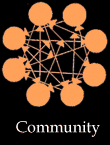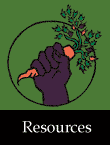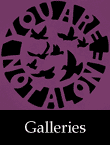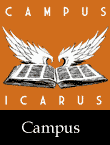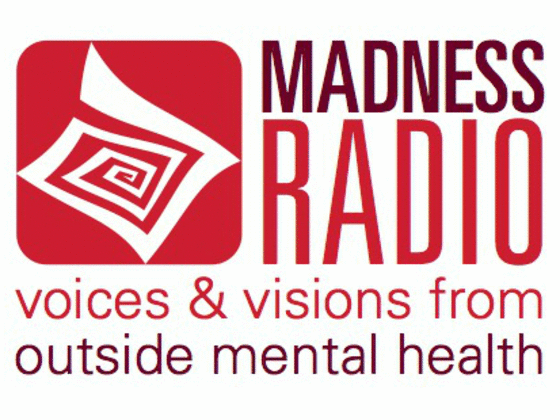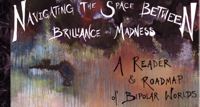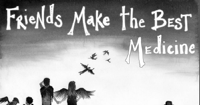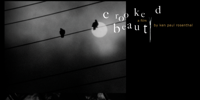Positive Peer Culture: Participatory Democracy and Group Therapy
Submitted by zuni on Fri, 05/13/2005 - 1:30pm"My basic sense of it has always been to get people to understand that in the long run, they themselves are the only protection they have against violence and injustice." -Ella Baker
I began working at a residential treatment facility in 2000. Immediately I started developing a form of group therapy for our unit with several of my co-workers based on the principles of Positive Peer Culture (P.P.C.). I saw the residents in the facility as merely complying with authority, but not intrinsically striving towards self-improvement. The staff worked hard at keeping the upper hand mostly by oppressive measures. We used state licensing approved set of physical restraint positions intended to contain and/or move patients into padded rooms when they became "harmful to themselves or others." The struggle between staff members and residents seemed like a daily battle for physical dominance, perpetuating itself violently just like the childhoods our youth had survived. As a person living and suffering from Bipolar disorder, I felt a responsibility to do my part to counter the dysfunctional system with some compassion. I believe that the concept of participatory democracy can be applied to psychological treatment and mental health in order to introduce a more humanistic model than the present one. We could create a participatory democracy to empower the residents to see their interconnectedness and counter the isolation they felt with a sense of community.
Participatory democracy can best be described for me by the philosophy of Ella Baker. Ms. Baker believed people do not need leaders. Instead, we need to learn how to organize so we can speak for ourselves. Likewise, a Zapatista woman told a reporter that Zapatistas' autonomy is "the profound conviction that the answers are in us." This is called asset-based thinking. "Asset based is contrasted to the deficit model that has for centuries dominated and has become the pervasive self-image of conquered and oppressed people" (Roberto Flores). In this model, a group starts solving their own problems beginning with the question, what do we have on our side? The group assesses what they collectively hold as assets, rather than assessing deficiencies that require outside help.
Three points define participatory democracy:
-
Reclaiming the decisions that control lives.
-
Minimizing hierarchy and the basis of authority that experts and professionals rely on for leadership.
-
Taking a direct action to reclaim power from fear, isolation, and detachment. Individuals can challenge oppression and begin the realization of self-empowerment.
When we began trying to implement the principles of direct democracy at our facility, the Positive Peer Culture (P.P.C.) theory was a relatively new form of support group developed by Harry Vorrath and Larry Brendtro. The theory of peer-based group therapy was intended for severely emotionally disturbed adolescents in a residential treatment facility. I was intrigued by how folks in my unit would respond to a group therapy where the peers in the group assumed responsibility for the care of each other. I felt a non-authoritive process was needed to help facilitate the collective healing of each member towards increased self-reliance in a space free from interference. The facility had instructed us to break up gatherings of youth, perceiving them as negative or potentially dangerous subcultures capable of increased violence. Our therapy structure turned this around and gave our group of youth the skills to support collective problem solving as a community in the P.P.C. model. This approach was radical compared with the favored forms of treatment currently used in California residential treatment facilities. The P.P.C. method didn't ask if the patients would like to receive help, it inquired whether the individual was willing to give help (what I consider asset-based thinking). When the person offers help to others, he/she became of value to others, increasing his/her own sense of worth and aiding in constructing a positive self-concept. By contrast, the models of individual therapy in traditional treatment approaches were based on the authority of the professionals applying enough control to impose conformity on an individual. These approaches pushed youth problems under the surface, often accentuating cycles of dependency and helplessness. It took some effort for the staff to begin framing problems in terms of group responsibility instead of individual behavioral modification.
After a week of preparation and getting familiar with goals and expectations, we had the first group meeting. The group members guided themselves through the meeting based on clear structure and expectations everyone had agreed not to break. These expectations included:
-
accepting criticism and input
-
only one person talking at a time
-
commenting on others' problems from a constructive stance
- importance of the groups' confidentiality.
The group members would each focus on one specific incident or worry, which had become crucial since the last meeting, by describing his/her triggers, feelings, thoughts, and their effects on themselves and the group. For participants, meetings became a forum for discussions, counseling, and problem solving without staff interference. We only had 2-3 meetings per week, as compared to other programs using P.P.C. daily, which was due mostly to the fact that our supervisors and the administration didn't support the group therapy model "” one in which staff members allowed the youth to control their own process. After using this model for a year, both individual progress and group affinity improved dramatically. In addition, the frequency of violence decreased substantially. The group process soon surpassed other forms of rehabilitation by addressing and establishing healthy patterns of interdependence and giving the patients skills to care for others and themselves. We would observe the youth opting to collectively problem solve in school, with each other interpersonally, and with younger kids. The group provided a means of healthy participation that mediated a lot of the anxiety and loss of normal familial structure these kids experienced in the facility. It allowed the adolescents a vision of themselves functioning well in a familial system, which for many of these kids could become a realistic goal.
The outcome of P.P.C. theory proved a success. However, despite its great outcome, a year and a half later, when I left the facility, the administration remained an authoritarian model of treatment based in individual behavior modification, and it eliminated group therapy from the treatment. Psychoanalysis' influence on the public has been dramatic, as corporations and politicians have experimented with control techniques and memes on the masses to exercise power. But control is only as good as the legitimacy people allow it. The ways we see our social fabric becoming thread barren are evident: people are more isolated from family, spend increased time in front of computers and televisions, witness greater acts of violence than ever before, and put higher priority on material accumulation and less on self-awareness. We are conditioned not to question the motives of the information we are handed, resulting in an apathy called the "manufacture of consent." We perpetuate cycles of dependence by giving up our own power and responsibility to change and wish for external salvation. Precious and few are the ways we have developed to relearn the importance of collective power. The most important revolutionary events in history and the most personally reaffirming actions have been made by people's power demanding their dignity and respect be upheld as equal to all others. It's time psychological practices follow and we all shall be one step closer to liberation.
I keep "walking while asking questions," as the Zapatistas are fond of saying. I believe the process towards liberation is one that necessitates building dual power. We are constructing alternatives today right next to old theories and institutions. As an Icarus Project collaborator, I'm optimistic my experience can play a part in our laboratory of resistance, using tools such as participatory democracy to liberate our minds and inspire our imaginations.



